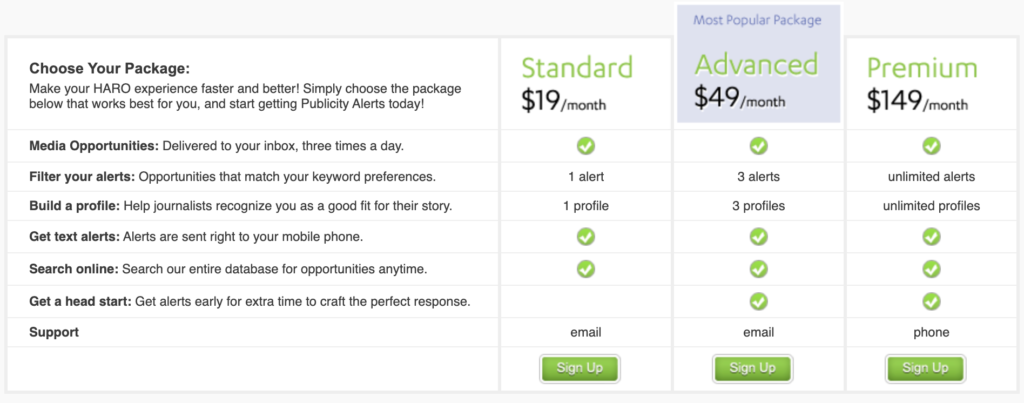
When it comes to link building, we all know that authority links are the most important.
They are, however, the most difficult to land.
Link building is sometimes put to the side when you have a thousand other tasks.
I’ve just been experimenting with a passive link-building strategy. That is, instead of my going and hunting for prospects, I let them come to me.
It wasn’t difficult either. All I had to do was utilize a service called HARO (Help A Reporter Out).
In this post, I’ll walk you through the exact steps for using HARO to get press coverage and create high-quality backlinks.
Are you new to link-building? Check out our Hands-On SEO Tutorial For Beginners & Dummies available on Amazon. Also, check out our Step by Step Guide to Learning SEO for Dummies.
Let’s dig in.
So what exactly is HARO?
HARO is a free-of-charge service that gives journalists access to a large database of potential sources for forthcoming articles, as well as daily possibilities for sources to get important media coverage.
The amazing thing about HARO is that journalists approach you. This is in contrast to conventional link-building strategies, which entail that you undertake all of the outreach yourself.
What’s more, the service is being used by major news organizations such as Mashable, Time, the Wall Street Journal, and the New York Times. These are just a few examples.
The chance to obtain some exposure and get some high-quality backlinks is there for the taking.
How does it work?
To begin, you’ll need to register as a source.
From Monday through Friday, you’ll get three emails a day, at 5:35 a.m., 12:35 p.m., and 5:35 p.m. ET.
The emails will be separated into various categories.
Each requirement will have a topic and an outlet. You should go over the message and see if there are any relevant issues to which you can respond.
You may check the DA of any request you’re considering replying to using Moz or whatever tool you prefer to use.
HARO may be utilized by any site with an Alexa score of less than one million, therefore not all of the sources will be very authoritative.
Creating the pitch
The larger the outlet, the greater the number of answers. As a result, you must give it your best.
Ensure to provide a meaningful answer when replying to an inquiry. A one- or two-line email will not suffice.
Make the journalist’s work as simple as possible by giving them something they can simply repost within their post.
In most queries, reporters will ask a few things.
Don’t respond to just one of them or supply little information.
You must ensure to answer each question fully in your response.
When responding to a question, provide your author bio as well as a link to your website. Make a detailed outline of how you want it to appear in the article.
If you provide a detailed response, you will most likely be contacted within a few days.
Just keep in mind that certain questions have tight deadlines and need a prompt response.
Suggestion
Make sure you’re sending helpful, high-quality pitches rather than spam. Make sure you don’t make the same errors we did when we wrote on blogger outreach based on our own experiences only.
Media links are among the most powerful and authoritative backlinks you can get for your website.
Cold pitching journalists, on the other hand, could prove difficult, and response rates are often poor. As a result, it’s a prevalent misperception that journalists don’t accept outside feedback.
Contrary to popular belief, this is not the case.
After all, journalists are very busy individuals with tight schedules, and any assistance you can provide would be much appreciated.
That is why HARO is a fantastic service. Rather than sending out press releases and pitches that are unlikely to be seen (unless you’re really fortunate), journalists are actively collecting donations.
The simpler things are for the journalist, the more likely they are to incorporate your suggestions. It should be possible for them to copy and paste your proposal directly into their article.
Paid HARO Accounts
After you’ve tried out the service, you should seriously consider upgrading to a premium HARO account. Many extra features become accessible as time goes on, giving you a competitive advantage while pitching.
Here’s a brief summary of what HARO Premium is all about.
There are four subscription options to choose from (including the free option).
The Standard account, which costs $19 per month, will be enough for most.

The Benefits of HARO Paid Accounts
The first benefit of paying for a membership is that you may create a profile/bio that will instantly appear in your pitches.
Links to online domains and social media are included in the bio. When pitching to journalists, they things assist to establish credibility and authority.
Your Profile on HARO
It’s wise to include information about your specialized areas of expertise and any past publications in which you have appeared.
With a premium membership, you can set up alerts for media requests that match specific keywords. If you’re in the United States, you can even receive SMS notifications
The ability to read and answer inquiries immediately via the internet interface is another useful feature.
You may even search keywords for certain questions.
HARO keyword search
The premium HARO accounts come with a slew of added tools to assist you in securing media coverage.
Last but not least
HARO is a highly passive means of producing high-quality backlinks and press mentions, unlike other link-building methods. Just remember that it will take some time and that you will need to deliver high-quality solutions to the questions.
Nonetheless, considering the amount of work necessary vs the possible benefit, it’s well worth your time.
I hope you enjoy reading the following blog post. If you want our team to do your marketing for you, click here.